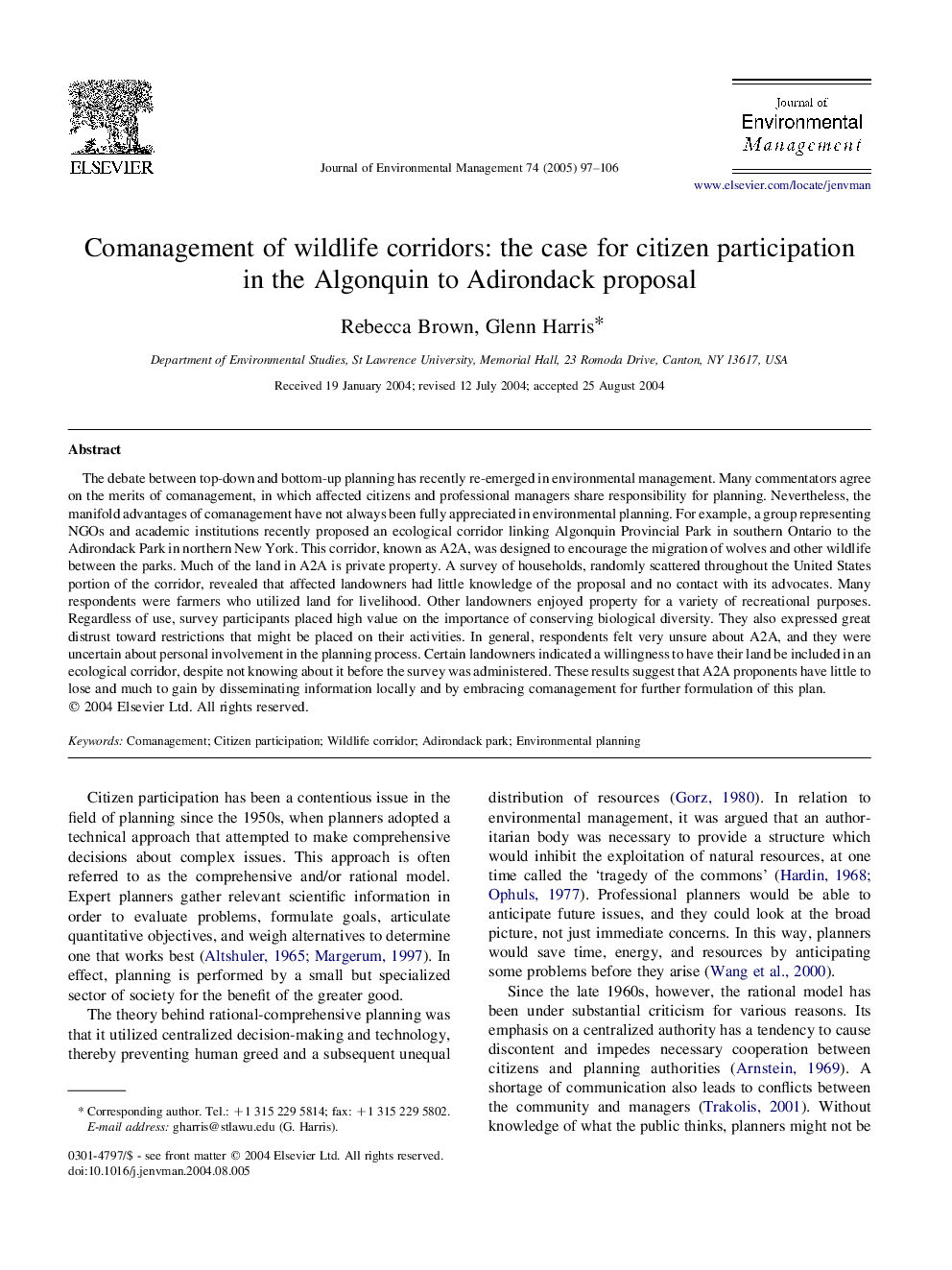| Article ID | Journal | Published Year | Pages | File Type |
|---|---|---|---|---|
| 10505633 | Journal of Environmental Management | 2005 | 10 Pages |
Abstract
The debate between top-down and bottom-up planning has recently re-emerged in environmental management. Many commentators agree on the merits of comanagement, in which affected citizens and professional managers share responsibility for planning. Nevertheless, the manifold advantages of comanagement have not always been fully appreciated in environmental planning. For example, a group representing NGOs and academic institutions recently proposed an ecological corridor linking Algonquin Provincial Park in southern Ontario to the Adirondack Park in northern New York. This corridor, known as A2A, was designed to encourage the migration of wolves and other wildlife between the parks. Much of the land in A2A is private property. A survey of households, randomly scattered throughout the United States portion of the corridor, revealed that affected landowners had little knowledge of the proposal and no contact with its advocates. Many respondents were farmers who utilized land for livelihood. Other landowners enjoyed property for a variety of recreational purposes. Regardless of use, survey participants placed high value on the importance of conserving biological diversity. They also expressed great distrust toward restrictions that might be placed on their activities. In general, respondents felt very unsure about A2A, and they were uncertain about personal involvement in the planning process. Certain landowners indicated a willingness to have their land be included in an ecological corridor, despite not knowing about it before the survey was administered. These results suggest that A2A proponents have little to lose and much to gain by disseminating information locally and by embracing comanagement for further formulation of this plan.
Related Topics
Physical Sciences and Engineering
Energy
Renewable Energy, Sustainability and the Environment
Authors
Rebecca Brown, Glenn Harris,
